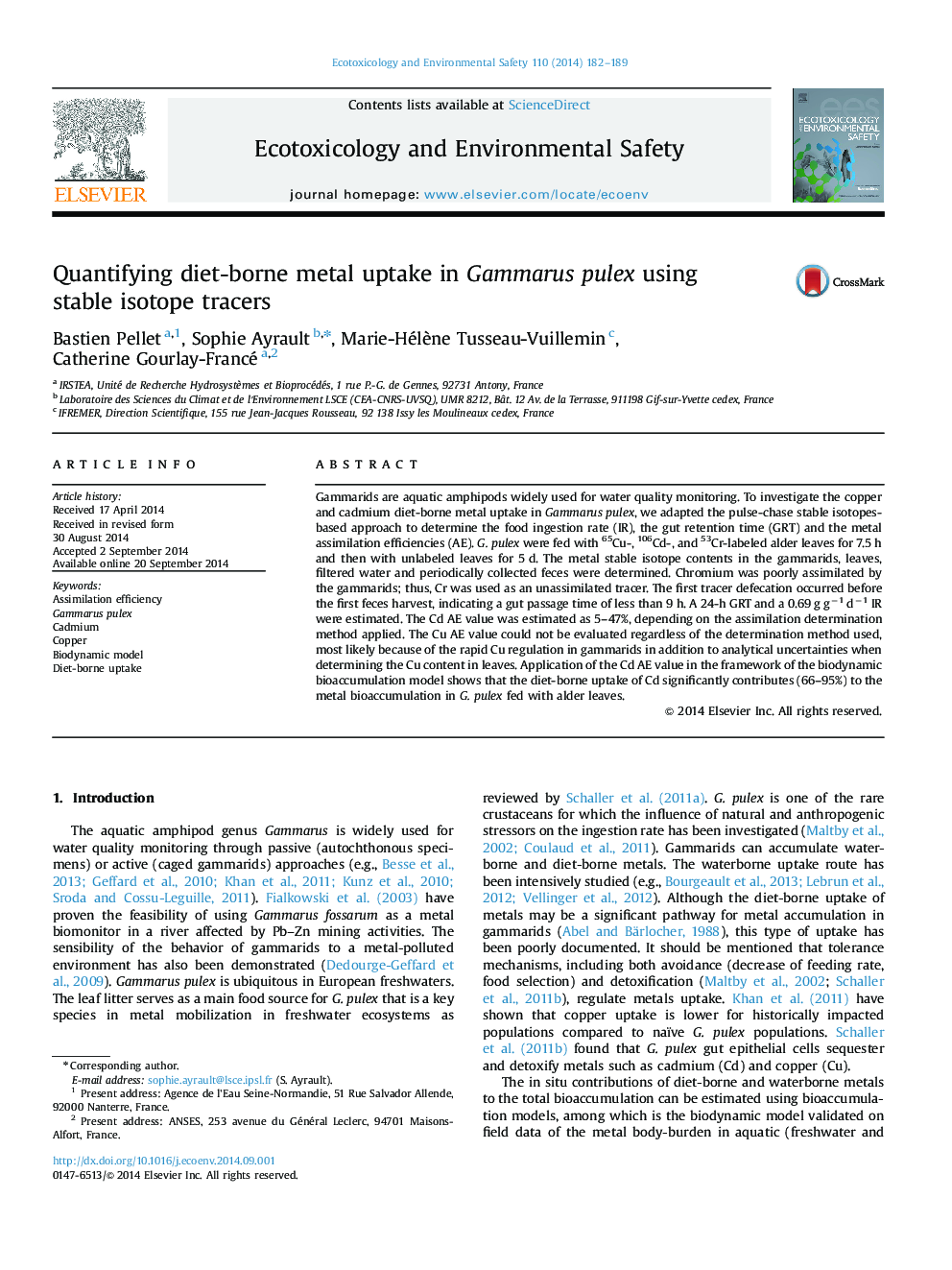| کد مقاله | کد نشریه | سال انتشار | مقاله انگلیسی | نسخه تمام متن |
|---|---|---|---|---|
| 4419910 | 1618953 | 2014 | 8 صفحه PDF | دانلود رایگان |

• The pulse-chase stable isotopes-based approach was used.
• We determined the assimilation efficiency values of Cd in G. pulex.
• The Cd diet-borne contribution was 66–94% of the observed Cd body-burden.
• No assimilation efficiency value could be determined for Cu.
Gammarids are aquatic amphipods widely used for water quality monitoring. To investigate the copper and cadmium diet-borne metal uptake in Gammarus pulex, we adapted the pulse-chase stable isotopes-based approach to determine the food ingestion rate (IR), the gut retention time (GRT) and the metal assimilation efficiencies (AE). G. pulex were fed with 65Cu-, 106Cd-, and 53Cr-labeled alder leaves for 7.5 h and then with unlabeled leaves for 5 d. The metal stable isotope contents in the gammarids, leaves, filtered water and periodically collected feces were determined. Chromium was poorly assimilated by the gammarids; thus, Cr was used as an unassimilated tracer. The first tracer defecation occurred before the first feces harvest, indicating a gut passage time of less than 9 h. A 24-h GRT and a 0.69 g g−1 d−1 IR were estimated. The Cd AE value was estimated as 5–47%, depending on the assimilation determination method applied. The Cu AE value could not be evaluated regardless of the determination method used, most likely because of the rapid Cu regulation in gammarids in addition to analytical uncertainties when determining the Cu content in leaves. Application of the Cd AE value in the framework of the biodynamic bioaccumulation model shows that the diet-borne uptake of Cd significantly contributes (66–95%) to the metal bioaccumulation in G. pulex fed with alder leaves.
Journal: Ecotoxicology and Environmental Safety - Volume 110, December 2014, Pages 182–189